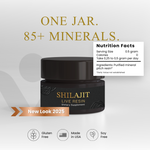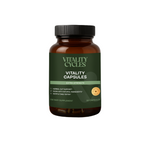Good News
Good News
Introduction: Healing with Dr. Daniels
(0:03) Hi, this is Dr. Daniels, and you are listening to Healing with Dr. Daniels. This is the Sunday, May 3rd, 2020 broadcast, and our title is Good News!
Good News: Declining Death Rates in the U.S.
(0:16) Yes, today I am going to examine the declining death rates in the United States. Yes, Yay! Declining death rates, that means deaths from all causes in the United States have been declining. Yes!
(0:33) Declining, at least since January 1st, 2020. So from January 1st, 2020 until today, which is all we have information for, which is May 2020, people dying from all causes is down, which means people are living longer, and we can actually itemize how many lives have been saved.
CDC Data on Declining Death Rates
(1:02) Now the CDC is only publishing numbers from February 1st, so I have to go with those numbers because that's all I have is what the CDC is publishing. I want to make a comparison with 2019, but that data is not published on this site. The most recent data I have for comparison is 2018. So we're going to use that data since that's the comparison data that the CDC is using on their site.
(1:31) So we're going totally by establishment information. So today we have good news!
Turpentine and Other Remedies
(1:39) But first, we're going to take our turpentine. All right. Now last time, if you recall, I did not drink my Shilajit, but I did later after the show. Okay, so turpentine, as many of you know, has been very helpful to many people for many ailments.
(2:03) On my website at vitalitycapsules.com, you can find information on how to safely and effectively use turpentine to advance your health. I use it. My mother uses it. My whole family uses it. I've helped hundreds that I know of. People tell me thousands or even millions that I don't know of with this free report.
(2:31) So go to vitalitycapsules.com, enter your email address, and receive your free report, the Candida Cleaner, which tells you how to take turpentine.
(2:44) Okay, so here we are. This is our little pipette. And you squeeze it, all the air out of the bulb, and suck it up. You see that level rising up, up, up, up, up, all the way to the top. Just right there to the neck. That's as far as I go. Right there to the neck. Boom. That's two and a half cc's, which is also half a teaspoon, which is a dose that I like.
Cataracts and the Benefits of Turpentine
(3:05) And we have white sugar. The best sugar to use is white sugar, white cane sugar. And spilled a few granules. Here we go. We're gonna squirt that on there. Yay! Get some water. Water is a great thing.
(3:38) Okay, spoonful of sugar helps the medicine go down. I absolutely love turpentine. I know I don't like the flavor. Even though I'm a big fan of turpentine, I stopped taking it. I'll have to be honest. I did stop taking it for several months. Maybe I have laziness, whatever. And I'm 63. So of course, I started getting these cataracts. And I thought, oh my god, I'm getting old.
(4:14) I started getting these eye drops, all those eye drops, all kinds of stuff. And I said, well, you know, let me just start taking turpentine again. I take it every Sunday. Let me just take it the rest of the week. Cataracts gone. I am so happy.
(4:27) So go to vitalitycouncils.com, enter your email address, and get your free report. You will be glad you did. Now you may, turpentine might not be for you. But at least it's great information to have. You can help other people with it as well.
Introduction to Shilajit and Its Benefits
(4:34) Okay, this is Mumio. People are asking about this and what's the brand that you use? There it is. See that? It's not even in English. Yeah. But you can do a screenshot. Make sure you have it on your device. That is what it looks like. You see it's a 100-gram container. 100 grams is enough for about 500 days, which is more than a year. And it's a very economical way to get all of your trace minerals.
(5:10) It generally runs, no matter, even at the higher-priced end, it runs certainly less than $40, usually in the $20 range. Okay, so this is what it looks like. Black tar. Turn it upside down. It doesn't fall out. And this is a scientific spatula. That's what it's called. You get these on Amazon for about $1.50. I like it because it gets right in there and pulls, and gets to the right angle on this, pulls that goo right out. There you go. That's it. To more or less, that's 200 milligrams, which is your daily dose.
Vitality Capsules Update
(7:07) All right, so now I've updated Vitality Capsules. Yay! Vitality Capsules. So, as you know, Vitality Capsules are made from herbs, the whole herbs. And what this means is there's not any kind of a chemical process that extracts a plant and makes it available for, you know, decades to come. No. So, we use the actual root, the actual leaf, the actual fruit of the herb to make Vitality Capsules.
(7:52) And because of this, and because of things like seasonality and logistics, occasionally certain ingredients are not available. So, Vitality Capsules have been out of stock for some time. So, we are now happy to say that we have successfully located all the ingredients for Vitality Capsules. They are now in production and they will be ready to ship in the next 10 days or so.
(8:11) So, this is a major, major, major victory. And the other reason for the delay, of course, is that all the ingredients go through rigorous spectrophotometry testing and the ones that don't pass we don't use. It's difficult on us, obviously, because there's fewer sales, because we're not able to sell as much. But when we do get them in stock, they are of high quality and they do help you to achieve those three bowel movements a day that you need to have a happier, healthier, and better life, more enjoyable life.
Analysis of the Declining Death Rates
(8:46) Which brings us to today's topic, which is good news, good news. And so, there has been a situation, a worldwide situation, so today I'm only going to talk about the United States. So, I can't really talk about the world because I don't have enough data.
(9:06) But since I was born in the United States and I did practice medicine in the United States, I am familiar with the information databases in the U.S. on certain things. So, I'm able to enter those databases, extract information, and bring you the good news.
(9:25) What is the good news? What could it possibly be? I mean, people are wearing masks, people are spraying bleach all over their houses, people are staying home, they're not visiting their loved ones, you know, the old folks are all shuttered away from the rest of their family, and no one wants to see them. For their own good, of course.
(9:46) So, the good news is, since long before any of these measures were taken, the death rate in the United States has been declining, and it has continued to decline. So, this is really amazing good news.
Finding the CDC Data
(10:04) So, what I want to do today is take a look at these declining death rates, and I want to also tell you where you can go to find these declining death rates because they are posted, hmm, they are posted on the CDC websites, and don't tell me that I misplaced my link. This is a very hard link to find, by the way, so you don't want to misplace it.
(10:53) Because if you go to the CDC website, you can kick around all day long for hours, which I have done, and not find it. And so I'm just so happy that one of my fans and listeners sent me this link because I didn't understand the numbers in the link. I said, oh great, this isn't what I found and I lost it.
(11:18) This is the link you need to go there and follow those numbers, follow the good news.
Decline in Death Rates: A Detailed Look
(12:00) The good news is, I tell you this is so awesome. I just love it when I can find good news. So, I'm gonna have to enter this into my browser because I happen to lose it.
(14:00) So, you hit the front page and got a bunch of yakety yak and a bunch of blah blah blah and then you get some light blue bars. One, two, three, third light blue bar. The number used to be in the far right, now it's in the middle column, but don't worry. You want to look at the percent of expected deaths.
(14:18) So percent of expected deaths from February 1st through April 25th, that's all of February, all of March, all of April, three months is 97% of expected deaths. This is in the midst of a distressing situation of a contagion, a pox upon the people, and in the midst of all this, death rates have declined.
(14:55) Well, they've declined by 3%. We have seven hundred and nineteen thousand deaths, and more or less, twenty-one thousand people have not died between February 1st and April 25th that we would have expected to die.
Trends in Leading Causes of Death
(16:00) In 2018, 2.8 million people died. Yep, 2.8 million people died, and we are on schedule in the United States in 2020 to have at least 86,000 fewer deaths. Yes, and this decline began before the quarantine, and believe it or not, during the quarantine, which would be the end of April and the first and second weeks of March, during the end of March, we had at least the greatest decline in deaths from February 1st through March 21st. That's a full month, all of February, I'm sorry, all February, all March, so two months of great declines.
(16:56) So, you have to ask yourself, where's the good news coming from? Where are the declines in death rates, and how can you position yourself to be in that group of people who are going to live longer and who are going to avoid the bad luck of dying?
Leading Causes of Death in 2018
(17:32) What are people dying of? Like, what are the leading causes of death? Now, we can't really ask the CDC directly because the press releases are conflicting. But we can look at historical data, and the answer is generally in the top ten.
(18:41) Of the top ten causes of death in the United States, the lowest cause of death is suicide, which accounts for the death of 48,000 Americans. Even if suicide were eradicated totally, it would not account for the 3% decline because we're looking for something that can account for 21,000 death reductions over a three-month period.
Impact of Medications on Alzheimer's and Stroke
(20:01) You have to first of all, take a look at how much they've declined by. Well, they've declined by 3%. We have seven hundred and nineteen thousand deaths, and more or less, twenty-one thousand people have not died between February 1st and April 25th that we would have expected to die.
(21:17) Next, Alzheimer's is declining. What is the number one cause of Alzheimer's? Anyone? The number one cause of Alzheimer's in the United States at the moment is believed to be drugs.
(21:39) Prescription drugs or over-the-counter drugs, such as Benadryl, for example. Blood pressure medications also can cause forgetfulness and Alzheimer's. So there's a lot of commonly used medications that cause Alzheimer's, so we're declining Alzheimer deaths.
(22:51) What is the number one cause of stroke? I will tell you, dehydration, not enough water. So these people who died of stroke, if they just had one more glass of water an hour before their stroke, they would not have had the stroke. That's how serious it is.
Decline in Heart Disease and Pneumonia Deaths
(23:42) The next decline, shockingly, is pneumonia. What causes pneumonia? The number one cause is dehydration. The next cause is hospital-acquired pneumonia.
(25:02) Heart disease is down. If you have heart disease in the United States, your doctor's got a lot of drugs, a lot of drugs that he's recommending for you. So again, taking fewer of these drugs will cause a reduction in heart disease.
Conclusion: The Good News
(33:01) So the good news, of course, is that in 2020, if you're a U.S. citizen, you're participating in an 86,000 reduction in the number of deaths in 2020 over 2018 because we don't have data for 2019.
(33:35) Drink more water, use fewer drugs, and save a life. Definitely, take off your mask, smile, and give someone a hug.
(34:01) I think it's a great time to be alive and just want to share the good news with you.
Questions and Answers
(35:03) In a recent podcast, you said that most people on blood thinners die of blood blank. Could you please tell what you meant? The full quote is, I will say most people on blood thinners die of their blood thinners.
(37:26) Are there differences in buying turpentine? Yes, there are so many prices on Amazon. I'm a diabetic. Do I have to mix it with sugar? Would stevia work? No, stevia will not work. The little parasites don’t like stevia, they’re not partial to it.
(39:20) Do you recommend mixing turpentine and castor oil and applying it to the hair? No, I do not. Turpentine can go through the scalp and through the skull and into the brain, and you can get seizures.
Final Thoughts
(53:05) So, I don't know where you are, what your situation is, or what you have access to, but the thing to eat would probably be pig ears. Pig ears. Yep, as many as you could possibly tolerate, and I would say honestly, it’s actually pretty good tasting.
(54:33) All right, that brings us to the end of our broadcast, and I'm so happy to bring you good news. And remember, as always, think happens.


